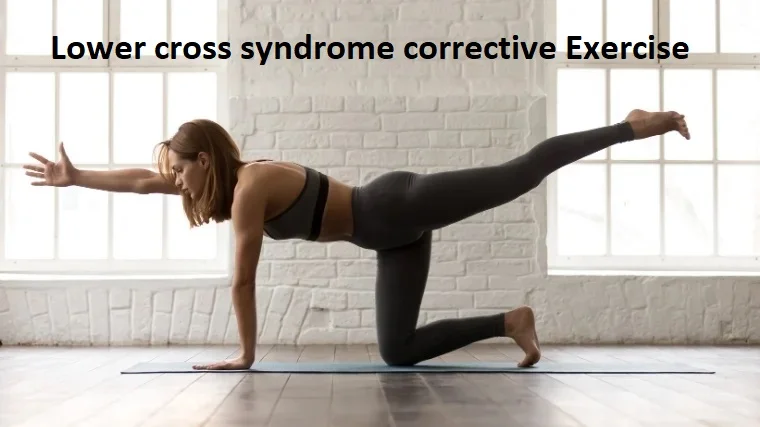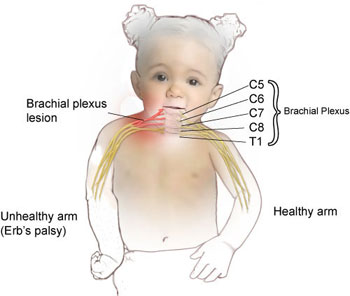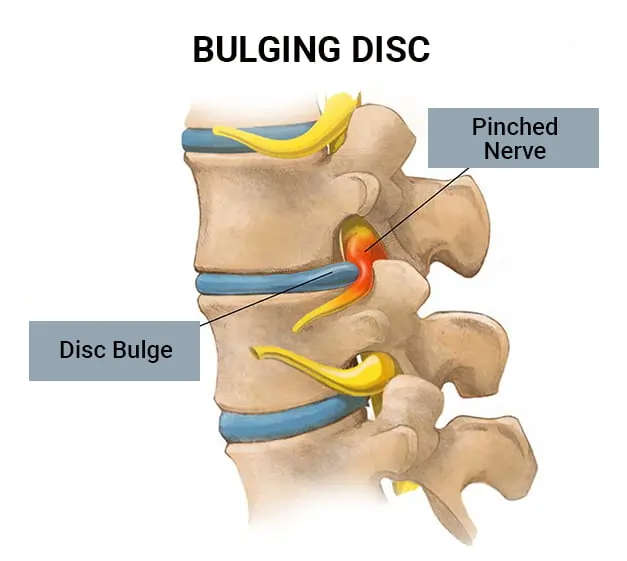Lower cross syndrome corrective Exercise
Table of Contents
Introduction
Corrective exercises play a vital role in addressing Lower Cross Syndrome, as they aim to stretch and release the tight muscles while activating and strengthening the weak muscles. The goal is to restore muscle balance, improve posture, and alleviate pain and discomfort associated with this condition.
Lower Cross Syndrome is a postural imbalance that commonly affects individuals who spend prolonged periods in seated positions or engage in repetitive movements that can lead to muscle imbalances in the lower back, hips, and thighs. This condition is characterized by tightness and overactivity in certain muscles, paired with weakness and underactivity in others, creating a “cross” pattern in the lower body.
There are two types of this syndrome upper cross syndrome and lower cross syndrome. Lower Cross Syndrome (LCS) occurs when the seen imbalance of muscle strength in the lower segment of the body. These imbalances can occur when muscles constantly become shortened or lengthened for any reason.
In lower cross syndrome, there is overactivity of the hip flexors and lumbar extensors and thus a feeling of tension. Added to this are the interactivity and weakness of the deep abdominal muscles on the abdomen and the gluteus maximus and mediastinal muscles on the back. In this syndrome, the hamstrings are also often tight. This imbalance results in anterior pelvic tilt, increased pelvic flexion, and compensatory hyperlordosis of the lumbar spine.
If your work habits or hobbies are sedentary, your body can suffer greatly as a result. You may have heard that sitting or slouching for long periods of time is bad for your health, and it’s true. A sedentary lifestyle contributes to tightening or shortening of muscles or weakening of muscles due to disuse and exercise. In general, exercise is always crucial for good health, active muscles, and correcting poor posture, which is the most important feature of the lower cross syndrome.
Symptoms
Decreased mobility of the lumbar spine and the lumbar spine become stiff, hip, pelvis, or pelvis.
Experience Pain in the hip flexor muscles, the groin of the hip, the spine, or gluteal muscles.
A protrusion of the abdomen is from the lower back that is too arched.
Tightness in the muscles of the lower back and gluteal muscles of the hip joint.
The condition can affect a person’s posture and movements
Hyperkyphosis: This is a curvature of the spine that makes a person’s upper back rounder. Hyperlordosis: This is a condition in which there is excessive curvature of the lower back.
Causes
A sedentary lifestyle is the biggest risk for getting Upper Cross Syndrome
Working at a computer, watching TV, or using a smartphone for a long time can make your poor posture or affect your good posture
Inactivity lifestyle and poor posture
There are specific muscles that can cause LCS to occur when these muscles become weakened or tight.
Muscles that can become weakened include the:
gluteus medius, which is situated on the outer surface of your pelvis
transversus abdominis, which is situated on either side of the abdominal wall
gluteus maximus, which is in the buttocks
posterior tibialis, which is situated in the lower leg
internal oblique, which is situated on either side of the abdominal wall
anterior tibialis, which is situated on the outside of the tibia bone
The muscle groups that can become tight and occur to LCS include the:
erector spinae, which is a group of muscles that originate inserted the length of the spine
latissimus dorsi, which are a pair of muscles this is cover the whole lower back
adductor complex, which is around the thigh
hip flexor complex, which comprises hip muscles
soleus, which is a part of the calf muscle in the posterior part of the leg
gastrocnemius, which is the major muscle in the calf
Best Exercise for the Cross-lumbar Syndrome
Quadriceps stretching exercises
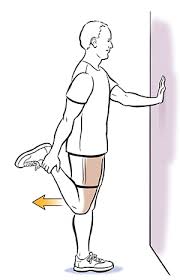
To perform a quadriceps stretch, stand on one leg and grab the back of a chair for balance. With your free hand, grab the extension behind you by the ankles. Next, gently pull your heel toward your back until you feel a strong stretch in the front of your thigh.
Hold this posture for 30 to 60 seconds, then switch to the other leg. performed this exercise three times on each leg before and after training any muscle group exercise. Remember to keep your knees close together. Also, maintain a neutral pelvis when doing the quadriceps stretch.
Do this exercise with about 3-4 repetitions with proper hold do 3 sets per day.
Bridge Exercises
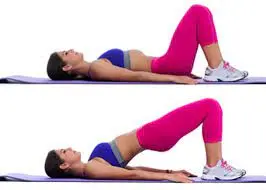
You can begin including the bridge stretch in your programme after you feel more at ease with lower back syndrome exercises. Bridges work the gluteus maximus. This muscle is usually activated when the pelvis is moved, especially when the person squats. Your glutes are an important part of your body, so keeping them strong can help with many lower back problems.
To perform the bridge, lie on the ground and bend your knees so that your feet are flat on the floor. Press your feet into the floor while keeping your arms at your sides. Next, lift your glutes off the ground so that your body forms a straight line from your knees to your shoulders. Remember to squeeze your glutes while keeping your shoulders on the floor.
Then lower your body to the ground and then rest for a few seconds before repeating the movement again. Do this lower cross syndrome exercise 15 times. Rest for a minute before starting another set.
Plank exercises

The plank is an excellent abdominal and core exercise that can correct low back syndrome. Works the rectus abdominis and other core muscles, including the abs. The effect of this lower cross syndrome exercise extends along the spine from the pelvis to the shoulder girdle.
To perform the plank exercise, start with the prone on-forearm position which is starting phase of the exercise. Next, place your forearms on the floor, slightly wider than shoulder-width apart, and grind your toes into the floor. Squeeze your glutes to stabilize your body and make sure your legs work too. you should avoid hyperextending your knee or locking your knees.
Neutralize your back and neck by focusing on a spot on the floor, preferably on your feet after placing your hands. The head and back must form a straight line. If you are a beginner, hold this position for at least 20 seconds before returning to the starting position. If you feel more comfortable, hold it as long as you can without compromising your form.
Performed this exercise about 5-7 repetitions without withholding in between exercises.
Hip flexors strech exercise
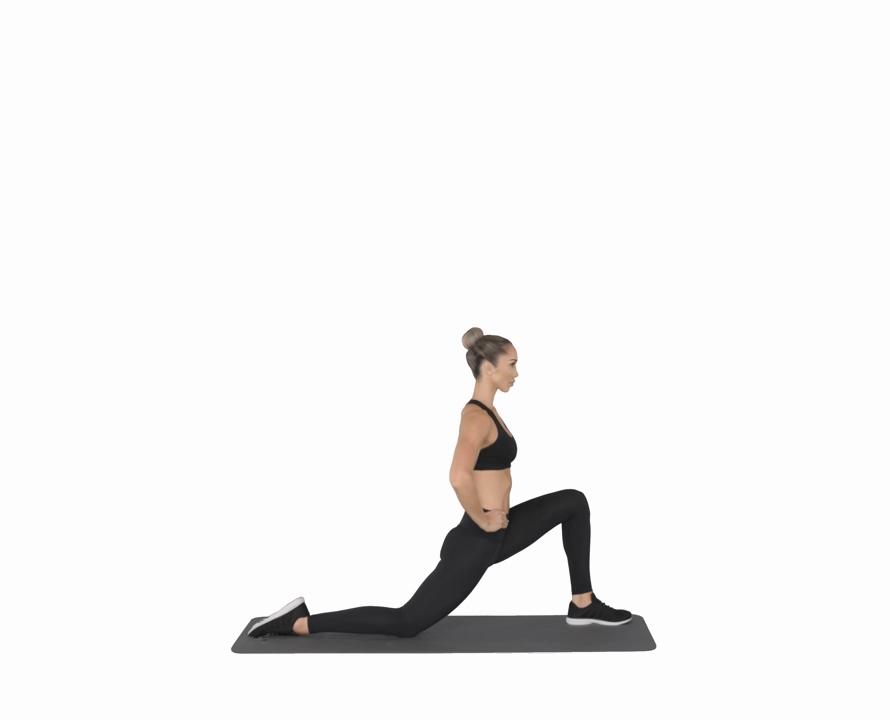
Begin the hip flexor stretch by kneeling position(on your right knee). Then bend your left leg forward at a 90-degree angle. Place your hand on your left knee and make sure your back is straight. Next, lean forward on your left hip while squeezing your right buttock. Hold this position for 30 seconds and repeat the movement on the other side. These are just a few low back syndrome exercises that can help the condition. Choose and perform exercises according to your comfort level, taking care not to overload your body.
Performed this stretch three or four times per session and performed 3 sets per day.
Wall Squat exercises

In this lower cross syndrome exercise, focus on first the strength of the muscles of the hip joint so squat exercises you can add on the progression period. To start, stand facing forward with your feet shoulder-width apart, chest up and toes slightly turned out. Improve your balance by extending your arms in front of you or placing them behind your head.
Once in this position, slowly bend your knees as you squeeze your hips and push yourself out as if you were sitting. Remember to keep your spine neutral, chest lifted, and don’t let your lower back round. Next, lower your body to the ground and make sure your thighs are parallel. Keep your knees over your toes; don’t let them fall in.
Performed this stretch three or four times per session and performed 3 sets per day.
Clam Shell exercise
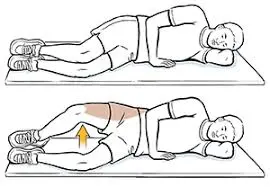
The clamshell is also a strengthening exercise. For this exercise, you should lie on your left side with your hips and legs stacked, your knee bent 90 degrees and your head on your left hand. Move your knees toward your body until your feet are in line with your glutes. Place your right hand on your right hip so it doesn’t lean back. you considered this position as the starting position for this exercise. make sure your core muscles are engaged and your legs are together throughout the movement. Now lift your right knee as far as you can without lifting your leg and leave your left knee off the ground. Stay in this position for a few seconds. then slowly lower your right knee over your left knee. You must do 20 repetitions on the right side, then switch to the left side. You can increase or decrease the number of repetitions according to your abilities and muscle strength.
Clamshell exercise with a resistance band
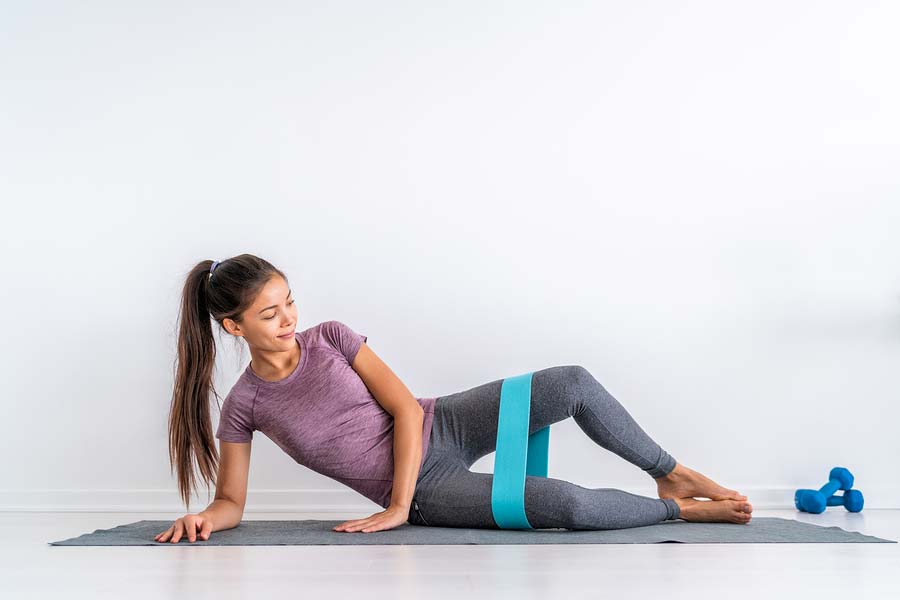
This variation of crunches helps work the glutes and hamstrings and ensures a strong core and back. fold the resistance band(band should be chosen according to the strength) around both thighs, just above the knees. You should lie on your right side, knees at a 45-degree angle, legs, and hips stacked. Contract your abdominal muscles to steady your heart. Your leg should be closed as you lift your left knee toward the ceiling. Do not let your right foot lift off the ground. From now on, you can do chest exercises by rotating the dumbbells. Hold the above movement for 2 seconds and then slowly lower the knee to the starting position. Do 20-25 repetitions on each side.
Pelvic Tilt Exercises

Pelvic tilt exercises provide relief from sciatica and lower back pain. this exercise is used to stretch abdominal muscles. Their benefits far outweigh their difficulty: all you have to do is lie on your back, bend your knees, and lift your hips. Lie on the floor (or on a mat on the floor) with your knees bent and feet on the floor. Extend your arms beside your body, palms down. The back of the head should touch the mat and the neck should be in line with the spine. Allow your back to maintain a natural arch, leaving space between your lower back and the mat. You will feel a little tension in your lower back then lower back to the starting position. performed this exercise with about 10-15 repetitions with proper hold minimum of 5 seconds hold is required do 3 sets per day.
Kneeling leg raise with back stretch
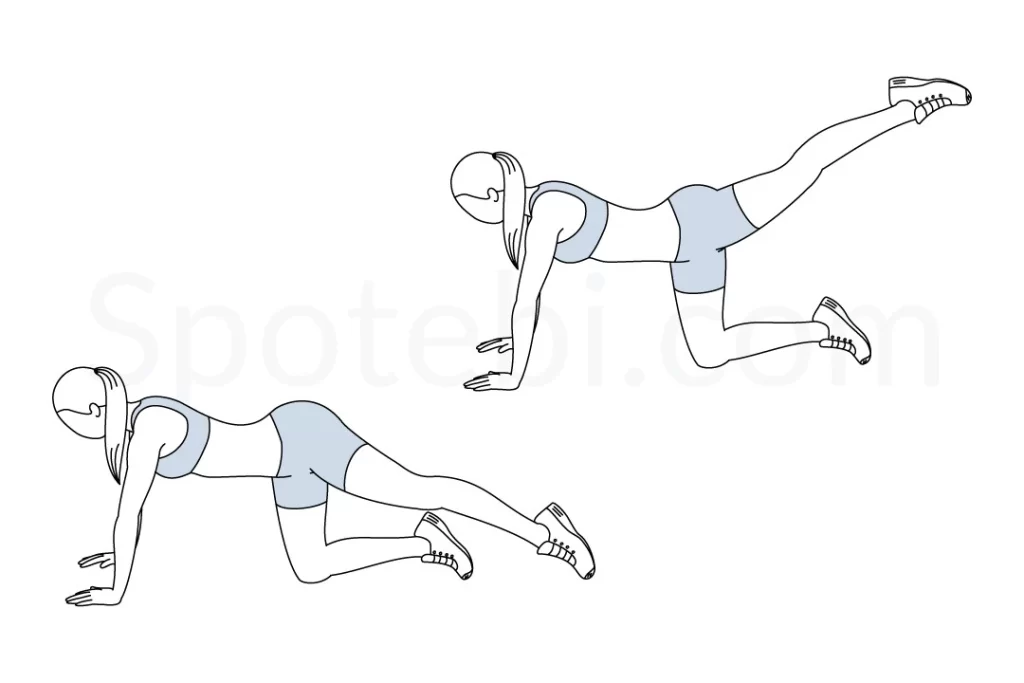
This exercise helps to stretch the abdominal muscles and tighten the back and glutes. Get down on your knees. Place your hands on the ground shoulder should be adducted. Align your hips with your knees.
Make sure your back is parallel to the ground so your hips are in a neutral position. Draw the navel towards the spine and arch the back as you exhale. Hold for 2 seconds and then return your spine to a neutral position. Reach one leg back and lift it until it reaches the same height as your body so that your lifted leg and body are in line.
Keep your spine in a neutral position. Hold this position for no more than 5 seconds, lower your leg, and repeat up to 10 times. Switch the legs. This exercise strengthens the abdominal and gluteal muscles and tones the back muscles. Make sure your extended leg stays in line with your body. Excessive bending of the back can cause back pain.
Lunge Stretch Exercises
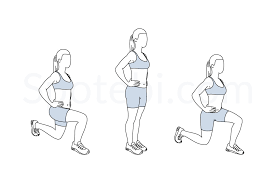
Start by placing your hands on your hips, standing with your feet shoulder-width apart. Next, step forward with one foot and bend your knees so that your hips drop. Extend your knee until the back knee almost touches the surface. Hold this position for two seconds.
Remember to maintain a straight position and keep the front knee behind the front of the foot. Press through your heels and extend both knees to bring yourself back to the starting position. Then you should repeat the stretch on the other leg which is not necessary. Do this lower cross syndrome exercise 10-15 times, making sure to switch sides. and be careful during this exercise.
Superman exercise

Strat Superman exercise in a prone position you can use a plinth or yoga mat for this exercise (hands and knees), shoulders and knees under hips. then you should contact your core as hard as possible before starting to move your spine.
Squeeze your heart, raise your left arm, and extend it forward until it is in line with your body. at the same time kick your right leg back until it is in line with your body. It’s important not to arch your lower back when you do this. Hold this Superman position for 4-5 seconds before slowly returning to the starting position. Repeat with the opposite side. 10 repetitions alternating sides. Extend your shoulder and leg only where it is comfortable and do not bend your lower back.
Bird Dog Exercise
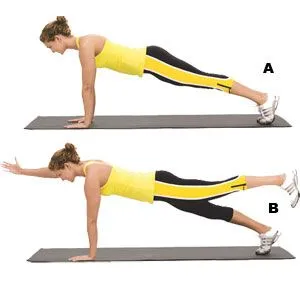
Bird Dog is a simple core muscle strength exercise that improves stability, maintained the neutral spine, and relieves or reduces your lower back pain. This exercise pose uses the entire body to target and strengthen the core, hip, and back muscles. It also helps maintain the proper posture and maintain the normal range of motion. You can use a yoga mat for this exercise or mat it is your choice.
Place a flat pillow or folded towel under your knees for additional cushioning. You can check the alignment with a mirror. Start from a table position on all fours. start with the quadrupled position on the mat and then. Maintain a neutral back with abs. Shrug your shoulders. While exercising you have to do the opposite leg raise when you raise your right arm raise you are keeping your shoulders and hips parallel to the ground.
Stretch your neck to look at the floor and tuck your chin into your chest. Hold this position for five to ten seconds and then back to the starting position. Hold this position(position of arm and leg) for five to ten seconds. Return to the starting position. This is 1 round. Do 2-3 sets per day with 8-12 repetitions.
Quadriceps Release With Foam Roller
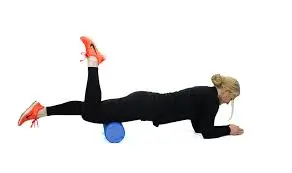
For quadriceps release with foam roller exercises you will need a foam roller for this exercise. You will roll the quads or the front of the thighs. Place the bolster or foam roller on your thighs and balance on your elbows in a plank position. Support your core and avoid arching or rounding your lower back or lumbar region.
Roll from above the knees to the right below the hip area. Monitor sensitive areas. Once you find a tender area, hold it for 10-20 seconds or until the pain subsides, then move on to another tender area. If you want to emphasize one leg more, cross the back leg over the other leg or simply shift your weight to the other side. Spread your legs and turn your legs outward to isolate your inner quads. Engage your outer quads by bringing your feet together, touching your toes, and turning your heels. Do this for no more than 2 minutes.

The lower back cat
Start the exercise with a quadruped position on the plinth or mat your both hands and knees, arch the back upwards, tucking the bottom under and chin to chest.
Extend the spine and drop back downwards.
Bring bottom back over feet.
You have to perform 3 sets per day with 12-15 repetitions.
Core dead bugs

In this core dead bugs exercise, you work the deep stabilizers, training the deep core muscles. Lie on the ground in a supine position with your knees in a flexion position. You’ll notice that your lower back doesn’t quite touch the ground. First, find the slope of your hip.
Roll your hips back so your lower back touches the ground more. Hold this position and then raise your legs up, making sure your shins are parallel to the ground, then raise your arms to the ceiling.
Maintain pelvic tilt all the time and make sure you breathe normally and don’t hold your breath all the time. Extend the opposite arm and leg simultaneously in a slow and controlled manner, making sure you don’t fall from bending your hips, then switch sides. performed 3 sets per day of 6 reps each day.
A supine ball squeeze
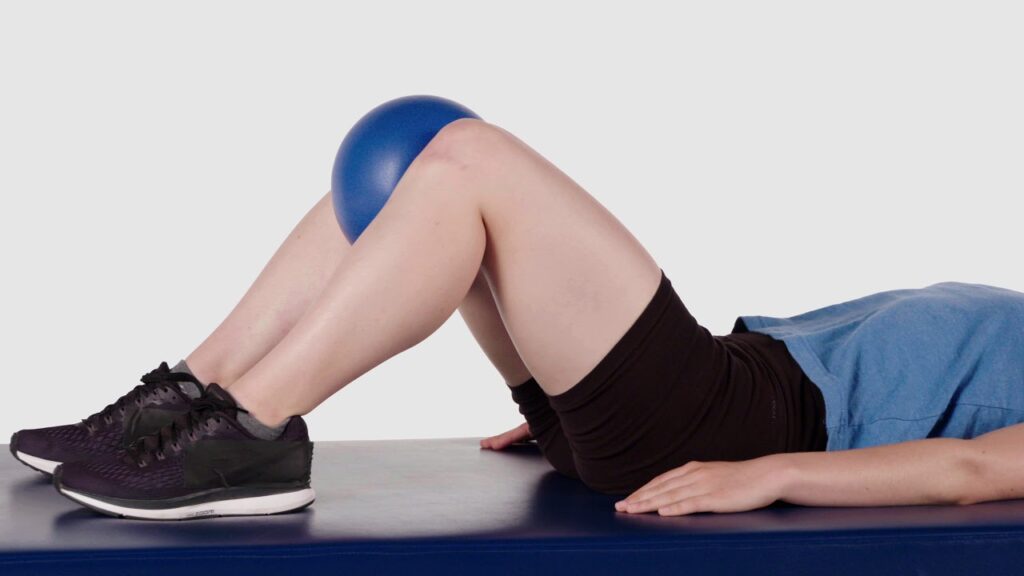
For this exercise you need a ball, if you don’t have one, you can use a pillow. start in a supine position with both hips flexed with a neutral spine. You should contact your core abdominal muscles. Exhale and hold the contraction for 5 seconds and pick up the medicine ball/chi balls. Ensure equal contraction of all adductor muscles.
You have to perform 3 sets per day with 12-15 repetitions.
How to Fix Your Posture during this Condition
In our daily lives, prolonged sitting contributes to muscle length and strength imbalances. In recent years, we have read a lot about the harmful consequences of prolonged sitting, and lower back problems can also occur in athletes who do not spend most of their time sitting.
If the pressure in your lower back and pelvis slows down, you may have lower cross syndrome (LCS). Prolonged sitting creates overactive and underactive muscles in the front and back of the pelvis.
A note from Samarpan Physiotherapy Clinic
As a Physical Therapist, one of the most common postural imbalances that I see in my patients is upper cross syndrome. If you are experiencing pain or discomfort, it is important to schedule an appointment with Physical Therapist as soon as possible. At Samarpan Clinic, we are dedicated to helping our patients find relief and improve their overall quality of life. our clinic has a team of trained and experienced Physical Therapists who are helping patients overcome lower cross syndrome symptoms and other postural imbalances.
FAQs
Exercise can automatically help treat Lower Cross Syndrome pain to improve the strength of the weakened muscle of the thigh and improve the strength of overall body muscle. there are specific exercises that considered your hip flexors muscles or abdominal muscles are best, as they work for the weak muscle weak muscles that are responsible for the LCS condition or loosen and relax tight muscles.
There are many Lower Cross Syndrome Exercises and Treatment Plans
The following are nine lower cross syndrome exercises to try at home after taking one session with physical therapists:
Pelvic Tilt Exercises…
Squat Exercises. …
Bridge Exercises. …
Plank Exercises. …
Quadricep Stretch Exercises. …
Lunge Stretch Exercises. …
Hip Flexor Stretch Exercises…
core a dead bug…
Quadriceps Release With Foam Roller…
Bird Dog Exercise…
Sit with your back straight, place your feet on the floor, and bend your knees. Place your palms on the ground behind your hips and roll your shoulders back and down. Stay in this position for 3-5 minutes and repeat the exercise as many times as possible during the day. for this condition you should start the strengthening exercise for all over the hip muscles you can use the resistance band or dumbles this equipment via you can use for this exercise.
Exercise can automatically help treat lower back pain and increase the strength of weak hip muscles and maintain normal muscle flexibility. Many exercises that specifically considered the flexors muscles or abdominals muscles are the best exercises because they increase the strengthening of weak muscles that developed or increased the lower cross syndrome or provide relaxation and loosen the tight muscles.
Lower cross syndrome – muscle weakness
Lower crossing syndrome is associated with weakness of the trunk muscles: rectus abdominis, internal oblique, external abdominis, and transverse abdominis, and weakness of the gluteal muscles: gluteus maximus, gluteus medius, and gluteus minimus.
Imbalance can be exacerbated by muscle overload, fatigue, and tension as well as weak, tight and shorted, and unstretched muscles. The prolonged sitting position is also the reason for a constant cause of muscle imbalance. the back muscles imbalance developed when the back muscles such as the abdominals become shortened, longed, or weak.
Lower Cross Syndrome Tests
Kemp’s check: The trying-out manner is generally defined as having an affected person carry out extension blended with rotation of the spinal vicinity of interest, with a high-quality check described as a of the affected person’s pain.
Human bodies had been designed to characteristic quality while status and walking, so unluckily while humans take a seat down for prolonged durations of time (for example, nearly a complete paintings day for the ones with “table jobs”), and over a duration of years, their hip flexor muscle groups and decrease again muscle groups can turn out to be completely tightened, even as their …
It allows for the stretching of the muscular tissues and enhances the posture of the body. It additionally allows for boosting bowel motion and enhancing the blood flow at some point in the body. Sitting cross-legged additionally allows for enhancing the variety of movement and are useful for the knees and the joints.

